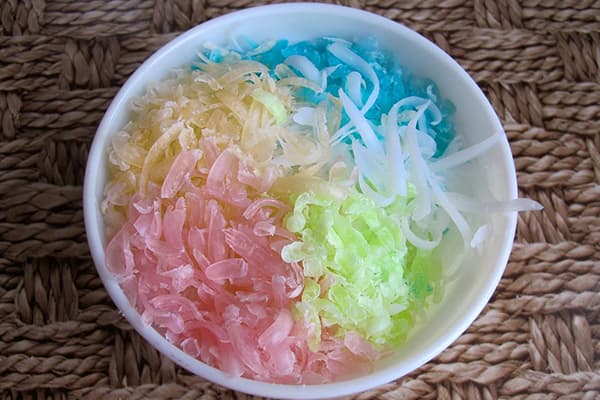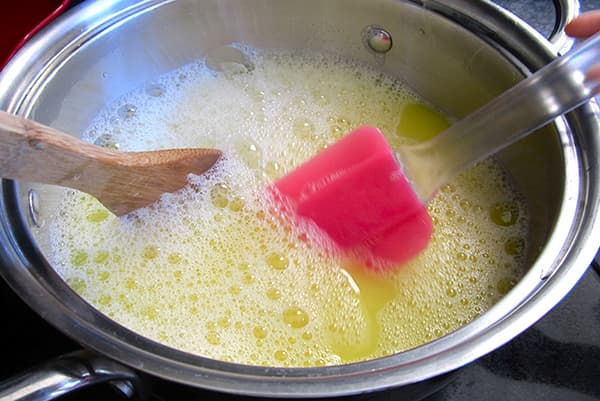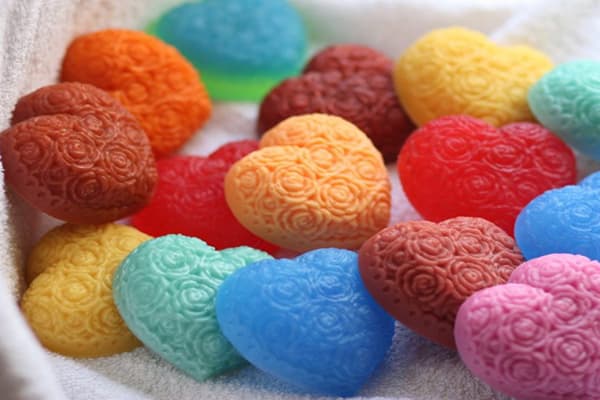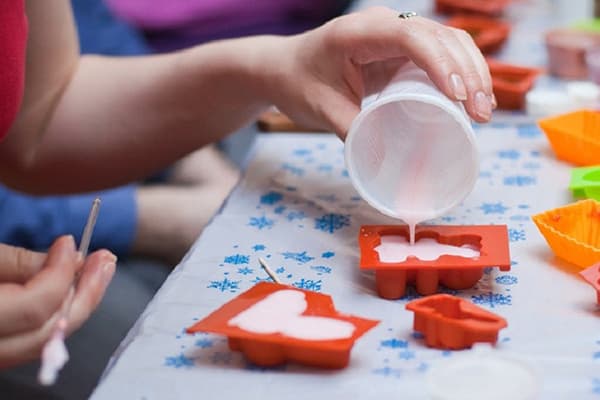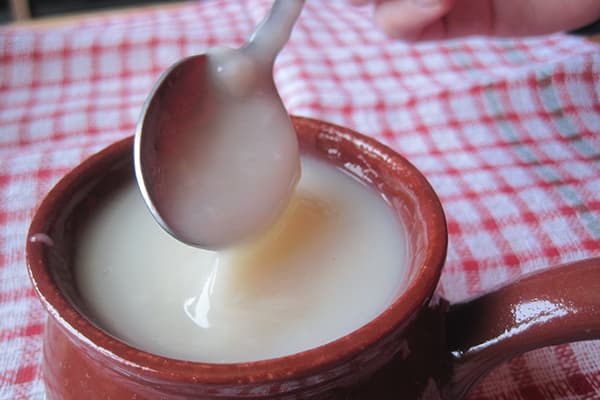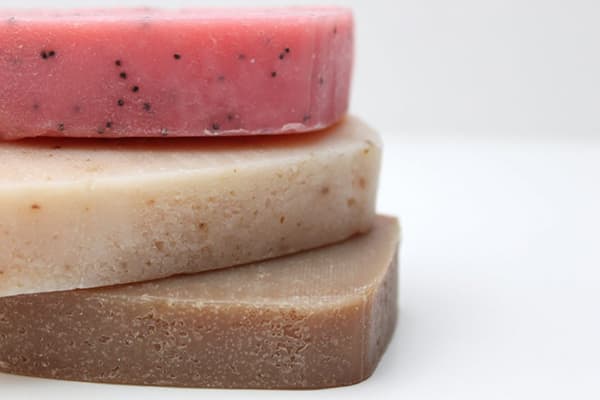Is it possible to make new soap from remnants?
Content:
When using bar soap, there are always pieces left in the house that are no longer convenient to wash with. We suggest giving them a second life and making soap from the remnants. There are different ways to recycle leftovers. You can simply mold them together or cook a brand new original decorative soap. Dyes, scrubbing particles, fragrances and oils are added to the melted soap base. To implement your plan, you will need 15–45 minutes of free time.
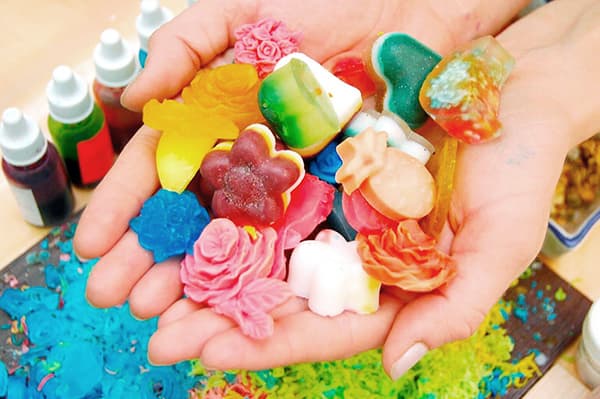
What kind of soap can be made from soap remnants?
Old remnants are a universal base. You can make soap from them to suit every taste. At the same time, it is not at all necessary to know the principles of soap making.
- A block of pieces. This is the easiest way to make soap from soap. Pour hot water into a soap dish and place any debris in the house there. After 10 minutes, squeeze the mass tightly with your hands. Remove from soap dish and dry. You will get one block.
- Liquid. If you chop up pieces of old soap and leave them in hot water for a long enough time, you will get liquid soap. Proportions: 150 g pieces per 250 ml of water. However, you need to keep in mind that this option does not last long, and it does not turn out completely homogeneous.It is best suited for use as a detergent for toilets, plumbing, and for washing things.
- With scrubbing particles. If you grate pieces of soap, heat them in a water bath, add ground coffee and squeeze the mass tightly with your hands, you will get a whole piece of excellent body scrub.
- Decorative. From the remnants you can make a real work of art - handmade soap. To do this, you need to prepare a soap base, and then color and flavor it to your taste.
- Soap-loofah. The idea is to place the remnants in a pocket that allows water and suds to pass through. It can be sewn from mesh or crocheted from polymer threads (they are often used for gartering plants). Soap-loofah is very convenient to use: washing hands, dishes, washing clothes, etc.
It is better to combine soap remnants with an identical smell. Mixing scents often goes wrong, and homemade soap develops unpleasant notes.
Instructions for making soap
To make full-fledged soap from debris, and not just a lump of soap, you will have to resort to cooking.
Melting soap is not as difficult as it seems at first glance. The course of action is approximately as follows:
- Grate the soap on a coarse grater or chop with a knife.
- Fill with water. For 300 grams of soap you will need 500 ml of water.
- Melt the mixture in a water bath or in the microwave.
- Pour the soap base into a greased mold.
- Wait for it to harden (1–2 days).
Old dried out soaps do not rub well and dissolve in water. Therefore, to begin with, it is recommended to soften them by holding them in hot water.
How to cook?
The cooking process has its own characteristics. It will take time to obtain a homogeneous soap base:
- in a water bath - from 30 minutes to 2 hours;
- in the microwave - 5-6 passes for 15 seconds.
The mixture must be constantly stirred and foam removed. It is better not to allow it to boil. To make solid soap, you should wait until the base thickens to the consistency of sour cream. It is important to consider that soap making will be accompanied by a strong odor, so it is better to cover the container with a lid and open the windows for ventilation.
How to paint?
To give soap from soap remnants an aesthetic appearance, you can add dye to the hot soap mass.
At home for coloring you can use:
- sea buckthorn oil (bright orange color);
- beet juice (red color and its shades);
- coffee grounds (brown);
- chamomile essential oil (blue);
- food coloring (1–7 drops per 100 grams of soap base).
For decoration, you can add glitter to the soap. However, it must be taken into account that in a hot base they settle to the bottom.
Aromatization
To give your new toilet soap a rich aroma, you can add essential oil to the base. Most often used for these purposes:
- orange oil;
- lemon;
- patchouli;
- lavender;
- grapefruit.
There is another recipe for flavoring soap. It is necessary to melt the remnants not in water, but in milk or a strong fragrant decoction (for example, mint, orange zest, cinnamon).
Pouring into mold
To get a bar of soap you will need to get molds. For this purpose you can use:
- children's molds;
- soap dish;
- cut bottom of the bottle;
- tin can;
- ice cube tray;
- candy packaging;
- yogurt cup.
In order for the soap to separate from the walls without difficulty, the inside of the mold should be generously greased with vegetable oil. Pour the slightly cooled soap base about 2 hours after removing from heat.
How to dissolve soap remnants to make liquid soap?
Liquid soap is used much more economically than solid soap and, moreover, will never slip out of your hands. Making a liquid version of soap from soap remnants is a great idea. But to make the consistency uniform, dissolving soap shavings in water is not enough. You will need to cook the mass.
Step-by-step instruction:
- Grind the remnants.
- Fill with water in a ratio of 1:2.
- Add 2 tablespoons of calendula or chamomile tincture. This will keep the liquid soap from thickening.
- Add 3-4 tablespoons of glycerin to make the soap viscous and plastic.
- Melt the mixture in a water bath. Stir occasionally and skim off foam with a spoon.
- Once the liquid is smooth, turn off the heat.
- After cooling, pour the liquid soap into a container with a dispenser.
3 recipes
In addition to providing hygiene, soap made from soap can have a cosmetic effect. To do this, additional ingredients are added to the classic recipe: vegetable and essential oils, plant extracts.
We suggest making 3 different soap options with your own hands:
- Honey-milk to preserve youthful facial skin. Prepare a soap base from 100 g of soap and 180 ml of water. Separately, dilute 1 tablespoon of honey, 10 g of milk powder, 10 ml of castor oil, 3 drops of ylang-ylang ether in 30 ml of water. Stir the fragrant water and add to the soap base. Store in the refrigerator for no longer than 14 days.
- Orange soap for children. Boil the peel of one orange in 500 ml of water for 10 minutes. Add 250 g of grated baby soap to the strained broth and place in a water bath for 15 minutes. Add 1 teaspoon of honey, 1 tablespoon of glycerin, 5 drops of orange essential oil.After another 10 minutes, remove the soap from the water bath, cool and pour into molds.
- From laundry soap. Grate 200 g of soap remnants, pour in 100 ml of boiling water and leave for 2 hours. Add to the mixture 1 teaspoon of vinegar, 1 tablespoon of honey, glycerin, olive and castor oil, 2 teaspoons of baby cream and chlorophyllipt, 3 drops of lavender ether. Beat for 2-3 minutes with a mixer.
You can extend the life of remnants in different ways. To make a full-fledged new soap, you need to grind and boil the pieces in a small amount of water. And if you’re too lazy to make soap, you can wet an old piece of soap and forcefully press it against the whole bar. Although the result will not be very aesthetically pleasing, the soap will be used without any residue. Good luck!
